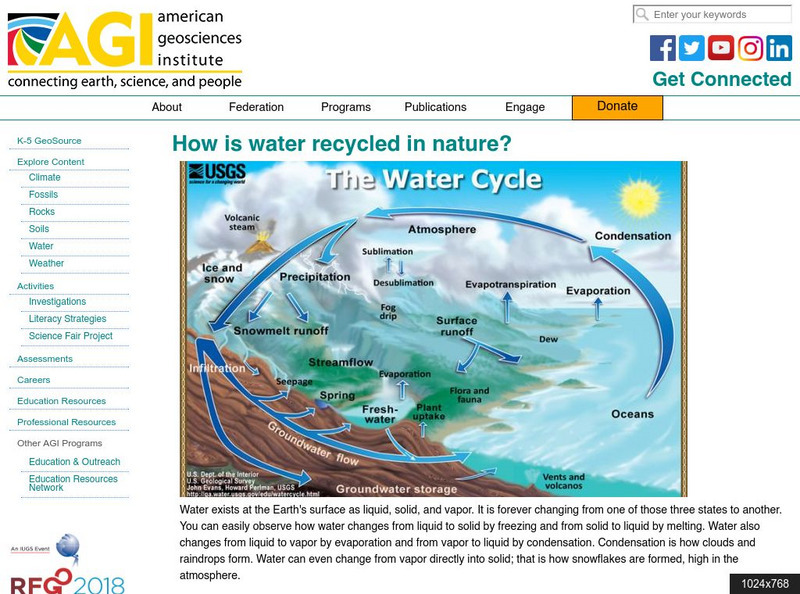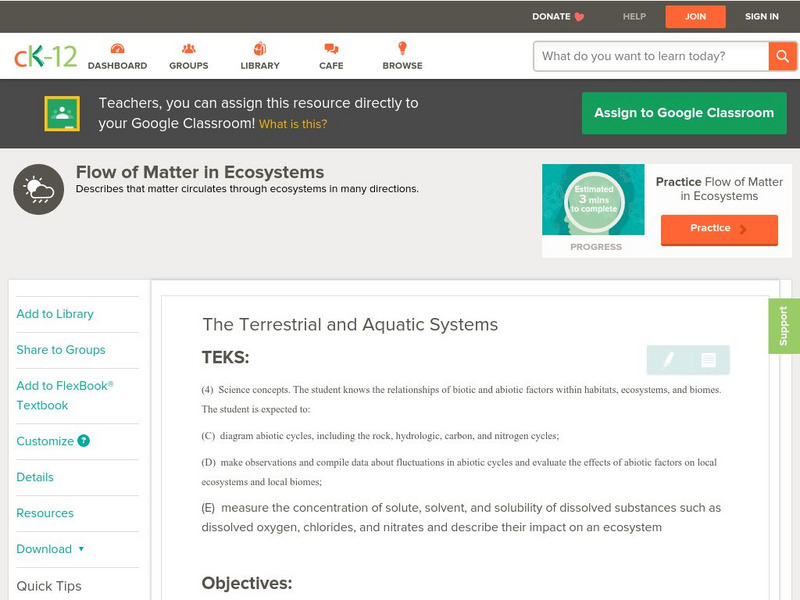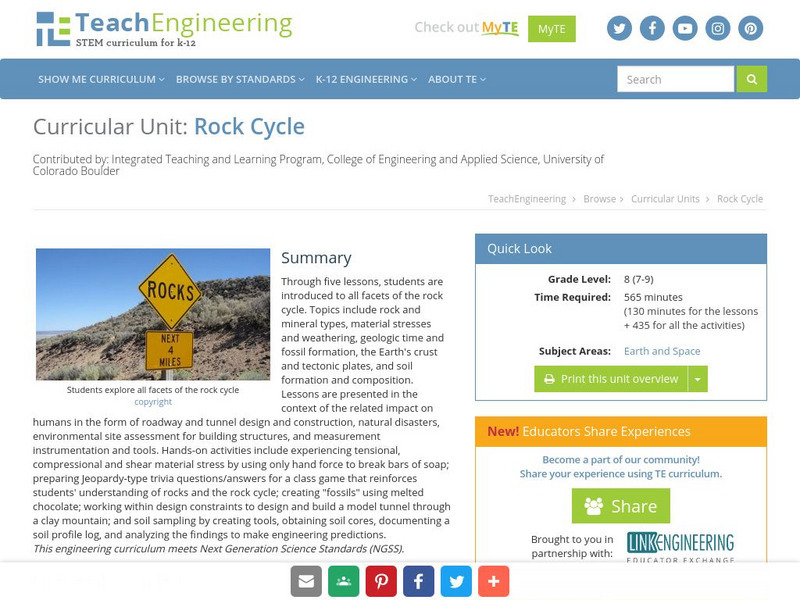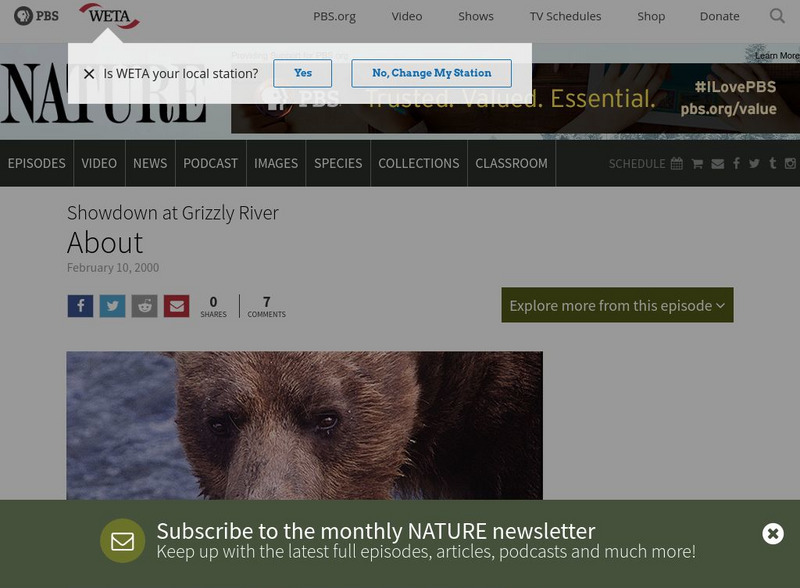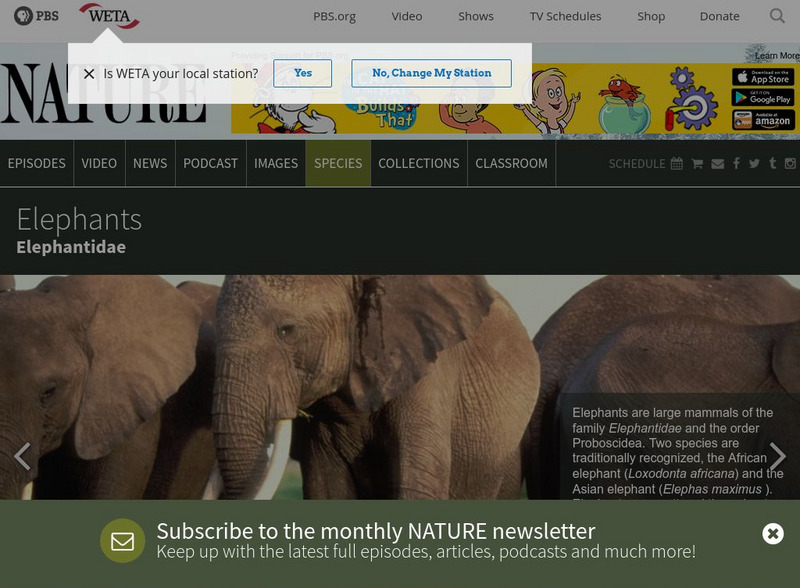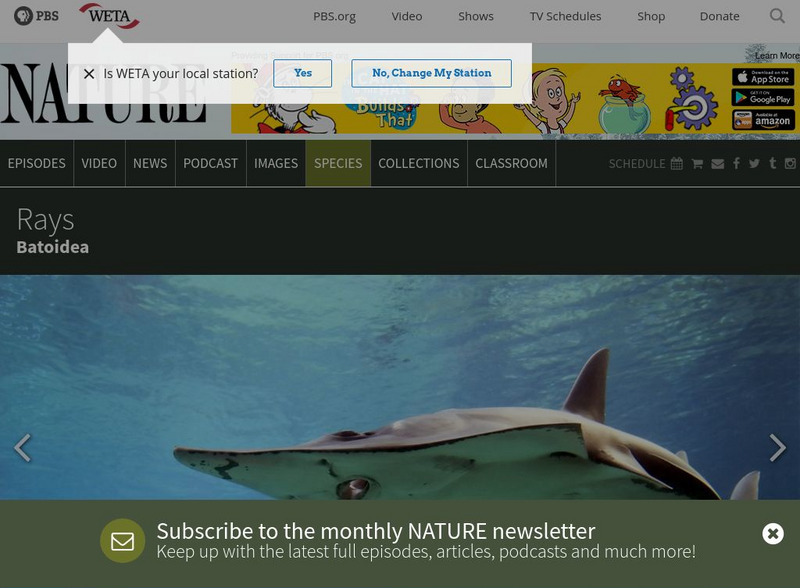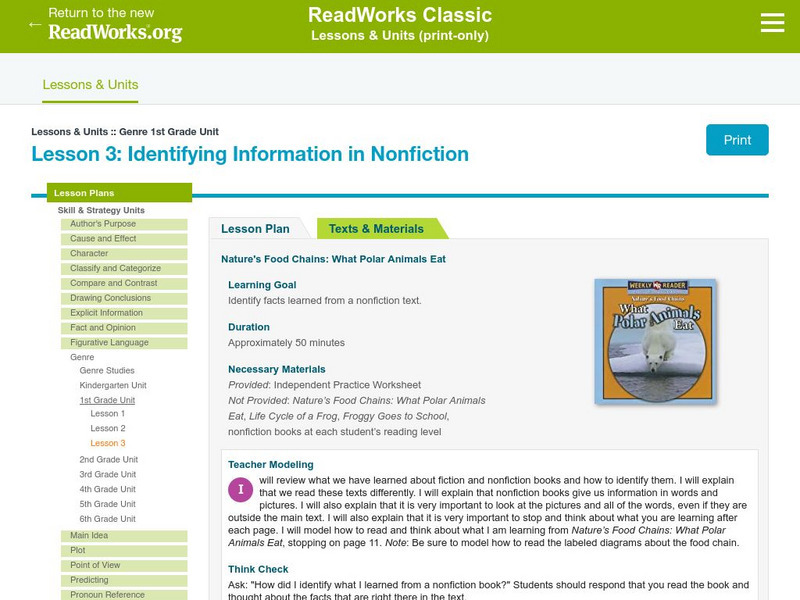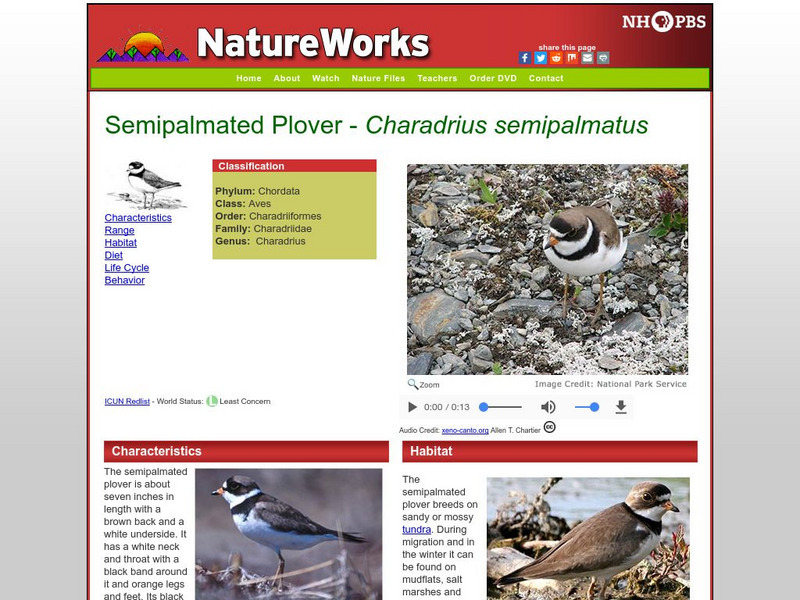American Geosciences Institute
American Geosciences Institute: How Is Water Recycled in Nature?
Learn about nature's most reliable geochemical cycle, the water cycle.
TeachEngineering
Teach Engineering: Natural and Urban "Stormwater" Water Cycle Models
Students apply their understanding of the natural water cycle and the urban stormwater water cycle, as well as the processes involved in both cycles to hypothesize how the flow of water is affected by altering precipitation.
TeachEngineering
Teach Engineering: Natural and Urban Stormwater Water Cycles
Through an overview of the components of the hydrologic cycle and the important roles they play in the design of engineered systems, young scholars' awareness of the world's limited fresh water resources is heightened. The lesson lays...
Wisc-Online
Wisc Online: Earth Science: Water Cycle Bingo
Test your understanding of terms associated with the water cycle in this bingo- style game.
CK-12 Foundation
Ck 12: Earth Science: Flow of Matter in Ecosystems
[Free Registration/Login may be required to access all resource tools.] In this module, students will learn about the cycles of nature (water, carbon, nitrogen, and phosphorus) that support the flow of nutrient matter through an...
Ministry of Education, Sports & Culture (Samoa) Government
Mesc: Samoa School Net: Forces to Make Weather: Weather & Water Cycle
Explains three forces of nature and how they impact the weather. These include infrared rays from the sun, differences in air pressure, and wind flow when hot and cold air masses meet. Supported by lots of visuals.
TeachEngineering
Teach Engineering: Biorecycling: Using Nature to Make Resources From Waste
By studying key processes in the carbon cycle, such as photosynthesis, composting, and anaerobic digestion, students learn how nature and engineers biorecycle carbon.
TeachEngineering
Teach Engineering: Rock Cycle
Through five lessons, students are introduced to all facets of the rock cycle. Topics include rock and mineral types, material stresses and weathering, geologic time and fossil formation, the Earth's crust and tectonic plates, and soil...
Science Education Resource Center at Carleton College
Serc: Investigating the Water Cycle: Evaporation
In this water cycle activity, students investigate the evaporation process by participating in an outdoor evaporation experiment held on the school grounds. Students will determine where evaporation takes place the fastest and how nature...
TeachEngineering
Teach Engineering: Making & Breaking: The Rock Cycle
Students learn the components of the rock cycle and how rocks can change over time under the influence of weathering, erosion, pressure and heat. They learn about geotechnical engineering and the role these engineers play in the...
Louisiana Department of Education
Louisiana Doe: Louisiana Believes: Social Studies: Grade 3: A Log's Life
Third graders learn about the interdependence of animals and trees in nature and the cycles of growth and decay. Students also learn about the importance of preserving balance in nature and what happens when we upset that balance. While...
PBS
Pbs: Nature: Showdown at Grizzly River
PBS Nature presents Grizzlies. Learn how grizzly bears raise their young around McNeil River Falls, a place in the wilderness of Alaska. This is a great place because of the salmon that swim up stream every summer.
Society for Science and the Public
Science News for Students: Nature Resets Body's Clock
Article reports on a recent study which found that people who spent a week in the woods experience a shift of two hours in their internal clocks. Includes a list of vocabulary words from the article.
PBS
Pbs Nature: Elephants
Did you know that the elephant is the largest animal in the world? Discover more about where they live, what they eat and how they socialize when you visit this site.
PBS
Pbs Nature: Ray
The word "manta" means blanket in Spanish--and the Manta ray gets its name from its blanketlike appearance in the water. Learn all about their life cycle and habitat in text and pictures.
Other
Manitoba Model Forest Network: Interaction Within Forest Ecosystems [Pdf]
This comprehensive Grade 7 Science unit has three chapters on forest ecosystems, natural cycles in a forest, and human interactions with a forest. Each chapter has experiments, activities and questions complete with answers. There are...
Other
Elmhurst College: Virtual Chembook: Carbon Cycle
A step-by-step discussion of the stages in the carbon cycle. Each step includes a diagram further explaining the processes involved, as well as pictures depicting combustion, respiration, photosynthesis, and decomposition.
PBS
Nh Pbs: Nature Works: Margay
The Margay is a nocturnal feline that lives in Mexico and South America. The content of this source includes a look at this species' life cycle, habitat, characteristics, range, behavior. and diet.
American Museum of Natural History
American Museum of Natural History: Ology: What Do You Know About Stars?
Test your knowledge with this ten-question quiz on stars. Focusing on stars in the Milky Way galaxy, questions range from the life cycle of a star to the number of stars in our galaxy.
Read Works
Read Works: Genre 1st Grade Unit: Identifying Information in Nonfiction
[Free Registration/Login Required] A instructional activity in which students use the books Nature's Food Chains: What Polar Animals Eat by Joanne Mattern, Life Cycle of a Frog by Angela Royston, and Froggy Goes to School by Jonathan...
PBS
Nh Pbs: Nature Works: Long Tailed Weasel
Discover the Long-Tailed Weasel, a small carnivore that lives in various parts of North America. The content of this site includes a look at this species' behavior, characteristics, range, habitat, life cycle, and diet.
PBS
Nh Pbs: Nature Works: Red Headed Woodpecker
The red-headed woodpecker can be found in woodlands throughout the United States east of the Rocky Mountains. The content of this site includes information on the characteristics, habitat, life cycle, range, behavior and diet of this...
PBS
Nh Pbs: Nature Works: Semipalmated Plover
This site offers a clear and concise look at the Semipalmated Plover. The information covered in the source includes characteristics, habitat, life cycle, range, diet and behavior. You will also find clear photographs of this aquatic bird.
PBS
Nh Pbs: Nature Works: Willow Ptarmigin
Identify what makes a Willow Ptarmigin unique in comparison with other types of Ptarmigins when you explore this site. This source provides information ranging from characteristics, life cycle, range, habitat, behavior and more of this...
Other popular searches
- Cycles in Nature Powerpoint
- Life Cycles in Nature
- Different Cycles in Nature
- Search Cycles in Nature
- Cycles in Nature Lab
- Cycles in Nature Maze
